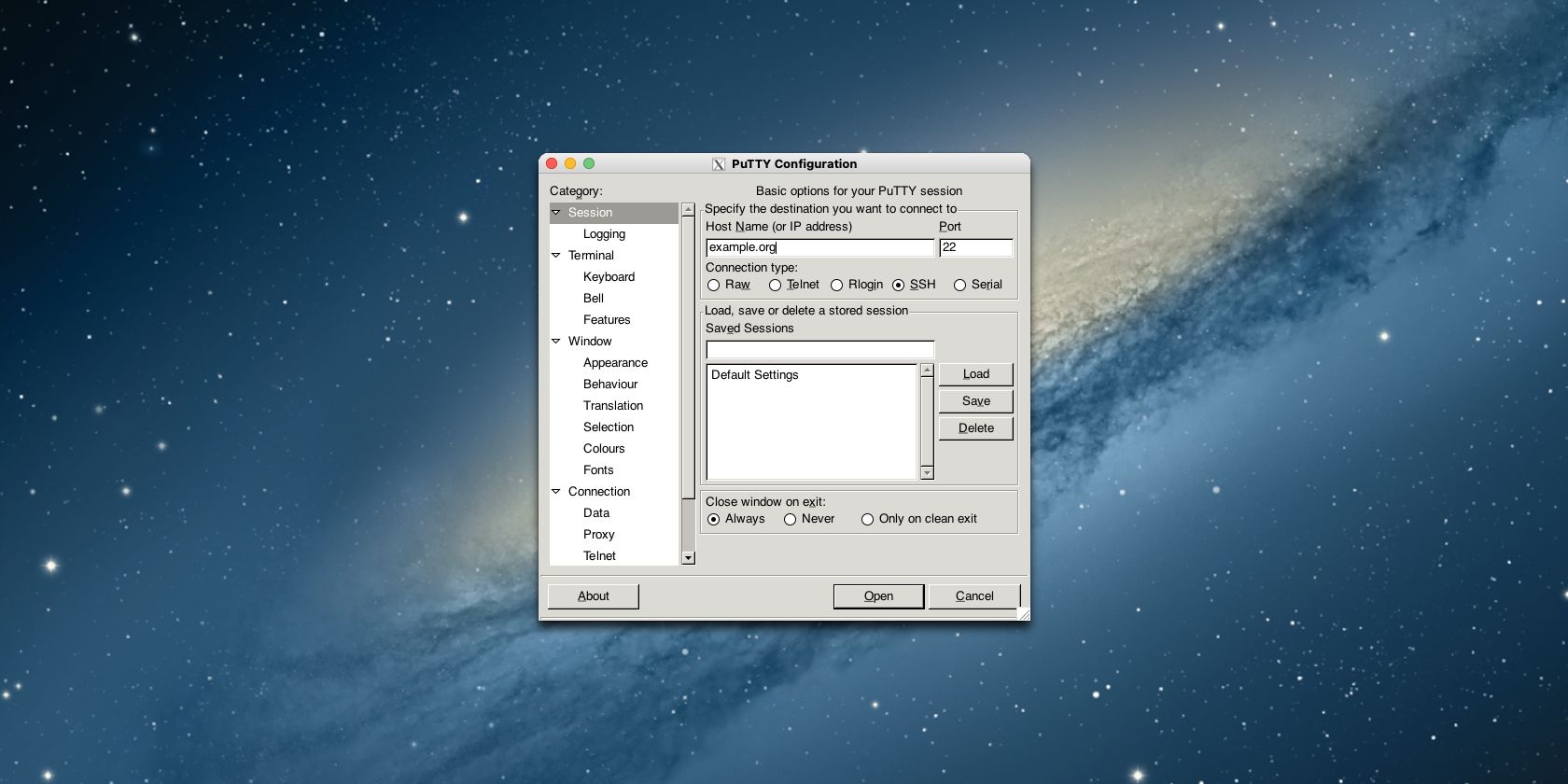
You can navigate marks with Cmd-Shift-Up and Down-arrow keys. Marks are indicated visually by a small blue triangle in the left margin. When shell integration is enabled, iTerm2 automatically adds a mark at each command prompt.
Open putty mac os code#

Open putty mac os download#
You can right click on a filename (e.g., in the output of ls) to download it. Download files from remote hosts with a click. You can see the return status code, working directory, running time, and more for shell commands entered at the prompt in the past. ITerm2 will present a modal alert when a long-running command finishes, if you ask it to. Alert when current command finishes running.

They make it easy to navigate to previous shell prompts or other locations of interest. Shell Integration enables numerous features: Marks
Open putty mac os install#
Add this to the end of ~/.login:ĭon't want to or can't install a login script? See the workaround at the end of this document usingĮlvish users: Diego Zamboni maintains a shell integration script for Elvish on Github. Next, you need to load the script at login time. Select your shell to see the appropriate instructions: This is also what you must do if you use a shell that isn't your login shell. When you select the iTerm2>Install Shell Integration menu item, it types this for you: curl -L | bashĭon't care for piping curl to bash? Do it by hand. Contributions for other shells are most welcome. The following shells are supported: tcsh, zsh, bash, and fish 2.3 or later. You should do this on every host you ssh to as well as your local machine. It will download and run a shell script as described below.

The easiest way to install shell integration is to select the iTerm2>Install Shell Integration menu item. ITerm2 may be integrated with the unix shell so that it can keep track of your command history, current working directory, host name, and more-even over ssh.


 0 kommentar(er)
0 kommentar(er)
